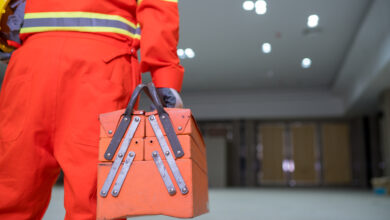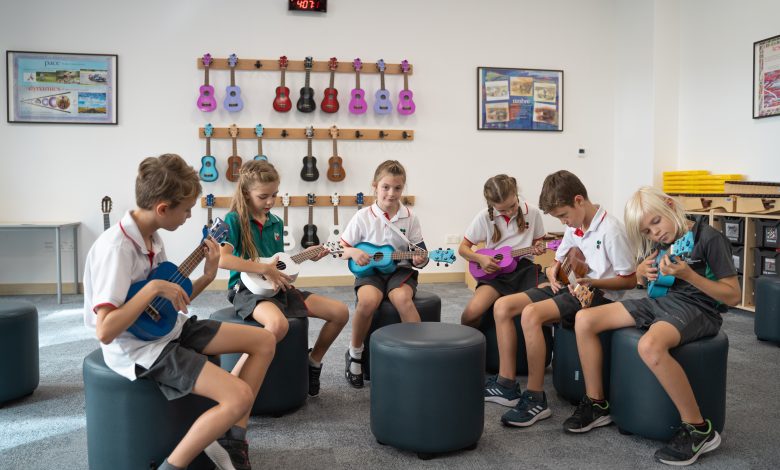
Flexible seating is an emerging trend, and is a movement away from the traditional desk-and-seat arrangement which faces the teacher.
In some classrooms, this can mean differing zones, defined by seating options including beanbags, couches, floor-cushions or therapy balls.
Read the Term 3 edition of School News HERE
Some options have proven benefits to student concentration and engagement, particularly for neurodiverse students or students with disability. For example, students with ADHD benefit from the increased movement of therapy balls or wobble stools. Seating with this type of movement also benefits students who have a “kinaesthetic learning” style.
Seating options in a diverse classroom arrangement mean students can choose whatever type of seating may help them stay on task. In one small scale study from the American mid-West, a teacher conducted a mixed-methods inquiry into student and teacher perception of flexible seating. Findings showed that students will self-select which zones enable the best performance and focus depending on the task. Having, the study’s author, noted that of the various options, some students would prefer certain options for certain subjects. However, she also noted that some students would always choose the traditional desk and seat option were they available.
Setting up flexible seating in the class may also provide other benefits in line with the principles of the New Zealand curriculum. Students may feel more agency and choice over their learning when provided with flexible seating options. Additionally, for tamariki who need lots of movement, flexible seating means short, built in “brain breaks” when switching between tasks.
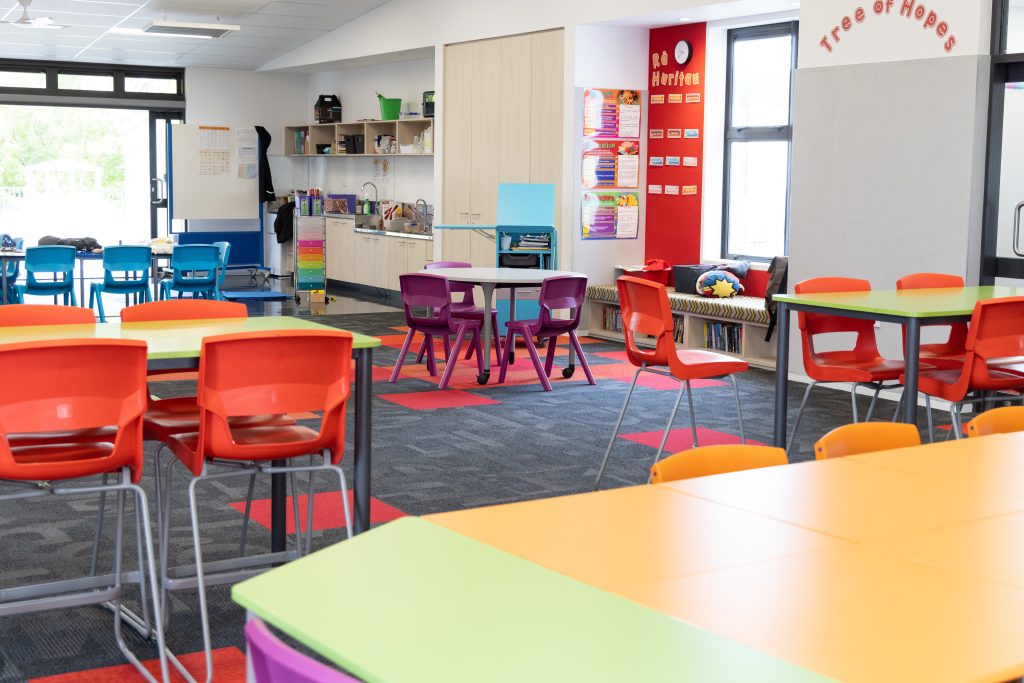
However, teachers should also be mindful of some drawbacks to new seating designs. Another study, which surveyed teacher perceptions of flexible seating, found that teachers recommended introducing flexible seating slowly, and making expectations clear. Without guidelines, students could be prone to misusing the flexible furniture. With appropriate supervision, though, flexible seating did not seem to impact students’ on- and off-task behaviour negatively. Additionally, teachers noted that each class is different, meaning different flexible seating options may be needed for each cohort.
But this kind of flexible seating may not be feasible for every classroom. Versatile forms of seating that may mimic the flexible classroom set-up, though, can be used. For example, stools are a popular choice for science and computer labs, technological subjects and more. They can come in an adjustable height design, all different colours and with flexible bases.
For large communal spaces such as gyms and auditoriums, there are a variety of seating options available to maximise space. Bleachers and other kinds of moveable or stackable seating can be utilised so that spaces can be converted for any occasion: performance, sports-games, assemblies, and prize-givings.
To find out more about the latest trends in seating, we spoke to some industry insiders.
Michael Hellyer from Sebel said that modular furniture is important in designing a classroom layout, as it allows educators to create settings for all ages.
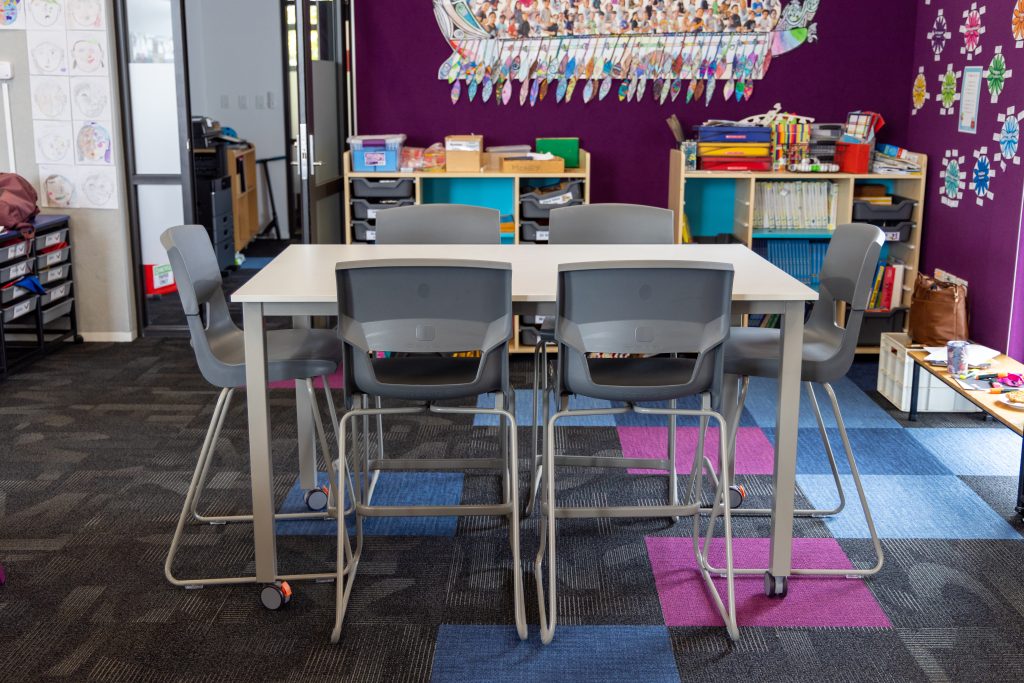
“Ensure that the products selected are fun, flexible, and comfortable. When picking the right seating for classrooms, schools generally opt for easy to move, lightweight and stackable chairs. This allows for the classroom to be altered easily based on the learning mode being used.
“Flexible furniture in the classroom can include modular seating that can be configured in a multitude of ways, with castors which make creating new spaces within minutes easy for both students and teachers,” Mr Hellyer said.
“We’re seeing schools opt for darker colours when it comes to selecting colourways for their seating. This is because they are easier to keep clean. There is also a trend toward furniture that is environmentally friendly.
“Active seats that allow students to rock and move easily in different directions are a great tool to make the learning environment fun and are a perfect option to help keep active children focused on learning.
“Round seating pads and large square cushions are great floor seating options for breakout spaces, reading zones or relaxation time. Sit-to-stand solutions are ideal for collaborative work around benches for learning spaces like science labs, food tech rooms, STEAM rooms and art rooms.”
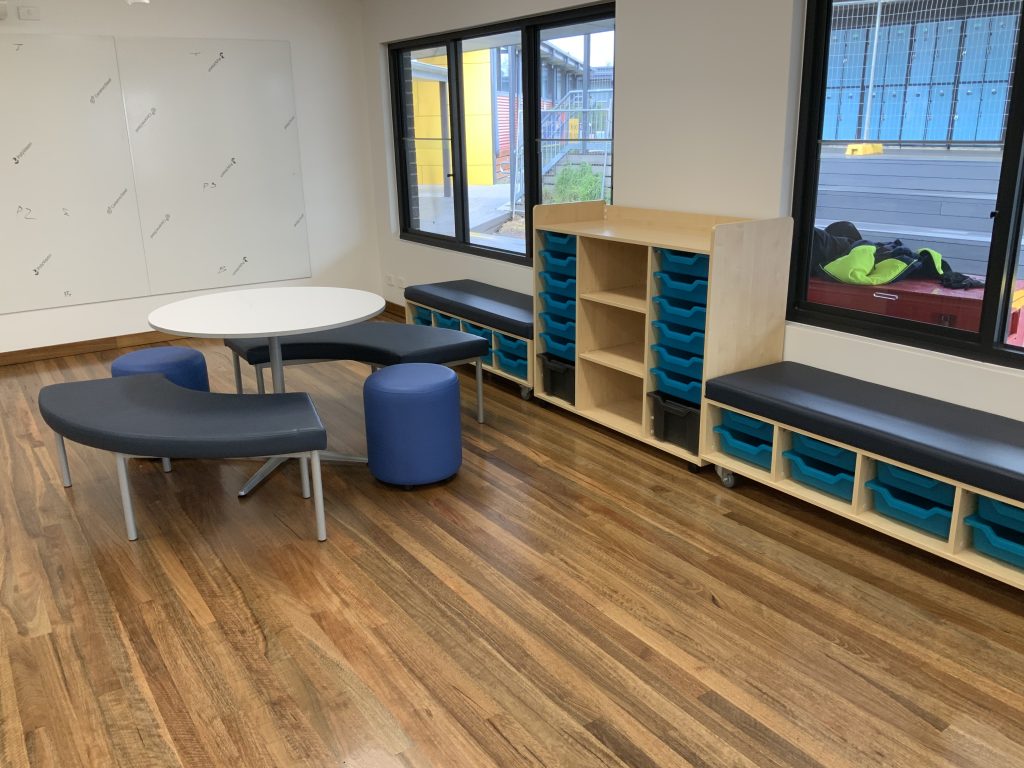
Helen Jones from Furnware advises that for focussed work and extended periods of sitting, a good ergonomic student chair that fits students correctly is important. “For more casual, collaborative learning soft furniture items such as couches or ottomans are a great addition, either positioned around a central table or booth style. For maximum flexibility and future proofing, modular designs with larger items on castors ensure settings can be reconfigured as required.
“Tiered seating continues to be a prevalent feature in modern learning spaces, achieved by adding high tables and stools into spaces. This varied approach to seating height creates interest, making a space more dynamic and providing good line of sight for both students and educators.
“For younger students, bean bags are a great casual option for individual reading or quiet time, although it pays to check the filling is not too noisy as this can create distraction. Shaped upholstered items also continue to be popular, adding an element of fun and increased postural support to low seating. Floor cushions allow younger students to move seating to the activity or to a space where they feel safe and ready to learn. Floor cushions also work well when combined with low kneeling tables as an affordable solution for collaborative learning for younger students.”






